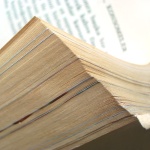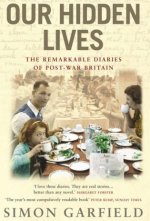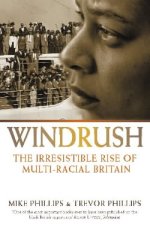 By coincidence, I’ve read two books on about British social history since 1945 back to back recently. (Actually, I read the excellent “The Lovely Bones” by Alice Sebold in between but I was ill and got through it in less than a day so it didn’t really feel like a long break between the other two books.)
By coincidence, I’ve read two books on about British social history since 1945 back to back recently. (Actually, I read the excellent “The Lovely Bones” by Alice Sebold in between but I was ill and got through it in less than a day so it didn’t really feel like a long break between the other two books.)
Anyway, the books I read were “Our Hidden Lives: The Remarkable Diaries of Post-war Britain” edited by Simon Garfield and “Windrush: The Irresistible Rise of Multi-racial Britain” by Mike Phillips and Trevor Phillips.
I’ve read the latter before, a couple of years during one of my library-going periods, but the former was new to me, so that first.

“Our Hidden Lives” is what I wanted when I picked up the good-but-fake Diary of An Ordinary Woman by Margaret Forster a couple of months ago. This book features the real Mass Observation diaries of five people from 1945 to 1948 and kept me enthralled from St Petersburg to Leeds Bradford and beyond (well, around Leeds).
I’ve read quite a lot of British and European social history in the 20th century, particularly centred around the Second World War but for some reason, probably a lack of good books immediately to hand rather than anything else, I’ve not really read a lot about the immediate post-war period. When we studied cultural history at university, I seem to recall the bad stuff from the era (rationing, strikes) was tagged onto the end of the WW2 lecture and the good stuff (start of welfare state) was included with the “New Look” consumer-driven positive 1950s. I don’t remember studying those difficult years on their own so this book introduced me to a lot of the specific details from the period for the first time.
It is a fascinating read – history told by the people as they were living it rather than written about by academics then/later or even told by the primary sources fifty years after the fact – and because it’s written by the “normal” people, it is a very accessible easy read unlike a lot of history books I’ve read over the years.
Some of the attitudes in it are shocking though. I knew there would be racism from having read about the wider period before (including my previous reading of “Windrush”) but I didn’t expect the anti-semitism, particularly as the revelations about the Holocaust came to light. It was strange to hear people claiming to be socialists/liberals but then making suggestions on par with the idea that ‘Hitler didn’t go far enough in wiping them out’. I refuse to accept these views under a “that’s just how people thought then” proviso but it _is_ part of our cultural history so it’s interesting to think about how such prejudice and scapegoating has shifted (whether the shift is onto another cultural group or it’s just moved underground: the prejudices are still there but “hidden” for the most part, and potentially even more dangerous).

If “Our Hidden Past” is a snapshot of experience, then “Windrush” is a three-hour epic movie that all the mainstream cinemas ignore but which is a huge success on the independent circuit. It covers the history of West Indian immigrants (and their children later born here) in Britain since WW2, told in the most part by the people themselves. Because it is covering thousands of people’s experiences over 50 years in 464 pages, it has to summarise a lot of the day to day stuff (almost whole decades are dismissed in a few paragraphs); instead, it focuses on specific incidents which can be seen as pivotal to either how the community is treated or how it thinks of itself.
It is these incidents which alarm me most about this book. These incidents – usually featuring unjust deaths or shocking discrimination and leading to large scale protests or in some case riots – have happened in the last 50 years (some in my lifetime) but that I haven’t heard about outside of this book. I’m thinking about (to name just a few of them) the 1958 Nottingham and Notting Dale ‘riots’, the death of Kelso Cochrane, the Bristol bus boycott, the Mangrove Nine trials and the horrific fire in a house in New Cross in 1981, which killed 13 young people and seriously injured several more. (I would have posted links for them all but even the internet let me down when it came to finding thorough information about this events: I’ll see if I can rectify that on Wikipedia later).
I’ve have been lucky in my formal history education as my teachers tended to choose relevant (mostly 20th century) history rather than focusing on kings and queens and the like – for example, for my GCSE, we looked at Vietnam, apartheid and South Africa, the Arab-Israeli conflict, Hitler’s rise to power, the social history of Nazi Germany and the history of the civil rights movement in the US from 1850 to 1970(ish). I attribute my interest in social history and general knowledge about the state of the world to this sort of education. It started me looking at primary and secondary sources and questioning how the media: so really, I was very lucky. But still: two years after I was born, 13 teenagers died in a possibly racist attack, and later that same year, Bristol, Brixton, Toxteth and Moss Side then in cities across the country erupted in what have been dubbed ‘race riots’ but I was not taught about these things. I knew about the Toxteth ones from jokes and comments throughout my childhood (since they were reasonably local and my dad was working in the area around the time) but it was only when I moved to the area for university and started to explore the history through other means that I learned they were not an isolated incident and to claim them as “black against white” riots (like the ones that happened in Nottingham and Notting Dale in 1958) is both inaccurate and insulting. Still though, I know all about Charles and Diana’s wedding from that year so that’s alright.
The examples of institutional/governmental racism are also shocking. A big smile crossed my face when I read a formal statement by Attlee in 1948 defending the newly arrived Windrush passengers’ right to their British nationality and right to settle in this country. Yay, I thought, a Prime Minister making a very strong point about inclusion and rights for a group vilified by the media and the large part of the population. But then I realise why he had to make that statement: it was a reply to a group of MPs who thought that the West Indians, many of whom had fought for Britain during the war and were coming over to help rebuilding the country, thought the West Indians didn’t have those rights. That wiped the smile off my face. As did the countless accounts of police racism (beatings, harrassment, unwarranted arrests, the Sus laws, shouts of “ni**er, ni**er, ni**er, oi, oi, oi” from the police in back of ‘snatch’ vans during the Moss Side disturbances in 1981) and the fact that neither the Prime Minister or the Queen sent condolences after the New Cross Fire until six weeks (and much prompting) after the event (but they responded instantly to a similarly deadly fire in a nightclub in Ireland just a few weeks later). Really, words can not described what needs to be said about this. (Literally – my backspace key is practically worn out from deleting all the different variations of that sentence that I started).
I’m not claiming that “Windrush” is the definitive book on the subject of post-war West Indian/black experience in Britain (it’s rather London-centric and probably displays other biases that I’m too honky to pick up on) but I’m going to use it as a starting point. Other books I’ve read on the subject have been more academic in focus (eg, Paul Gilroy’s work) whereas because this is mostly made up of transcriptions of interviews with people that were there, it, like “Our Hidden Past”, is very accessible. There is no excuse for people not to read this – or at the VERY least, explore the BBC resource related to it (http://www.bbc.co.uk/history/society_culture/multicultural/windrush_01.shtml).
